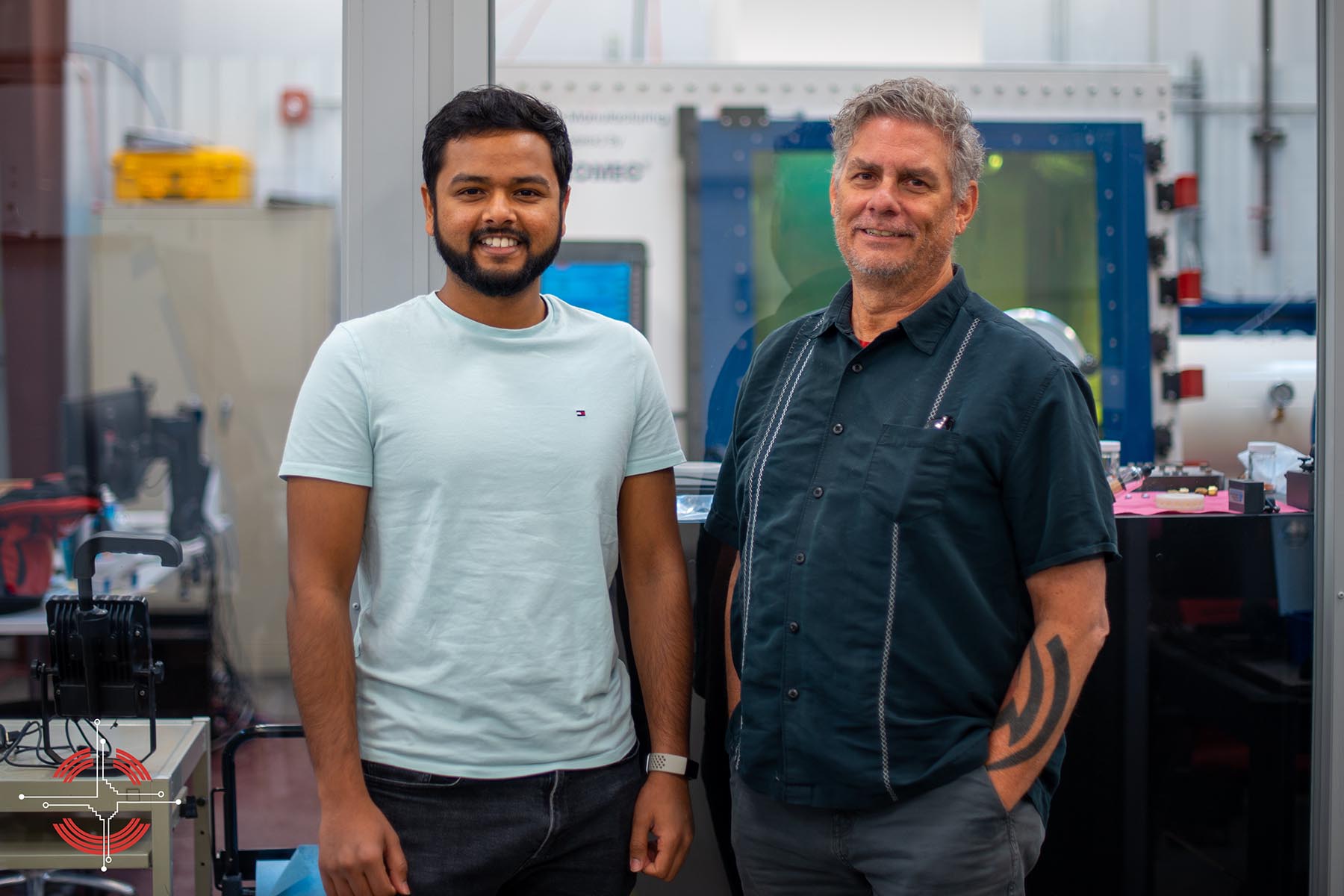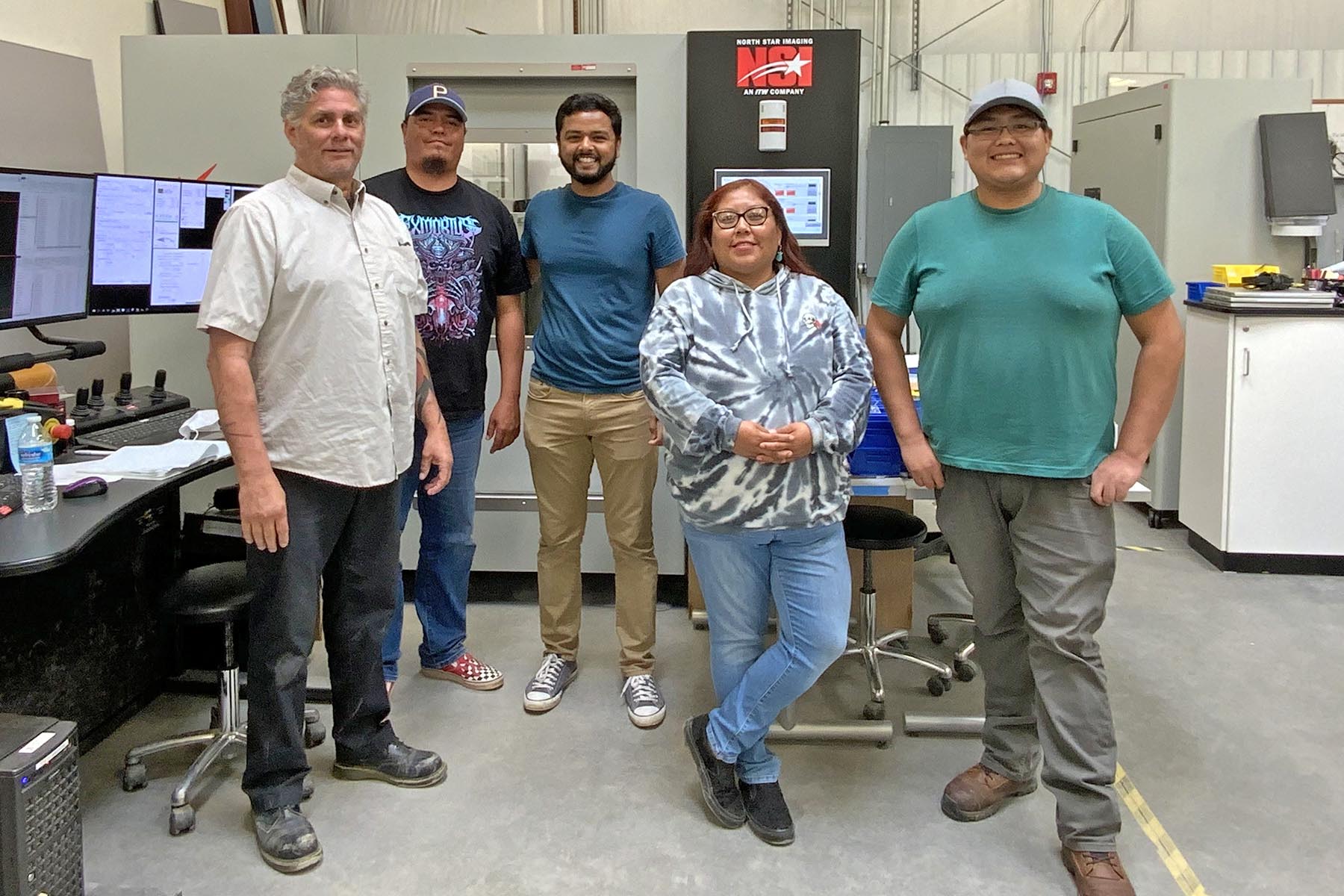Purdue collaborates with Navajo Tech on manufacturing research

Crown jewel
Travel west of Albuquerque, New Mexico, and you’ll traverse dozens of dusty pueblos along what used to be historic Route 66. After two sun-drenched hours, you’ll enter the Navajo Nation, and eventually reach a little town called Crownpoint, which – as the name suggests – hosts a beautiful jewel.
Navajo Technical University is the largest tribal college in the United States, educating more than 1,200 students a year. Students study everything from business to nursing to law, all under the overarching Navajo Diné philosophy.
And like Purdue, they’re an industry leader focused on producing world-class engineers. Navajo Tech is the only American tribal college to host ABET-accredited engineering programs. So it seems only natural that the two schools would form a relationship.
“The Navajo Nation needs engineers, just like every nation,” said Monsuru Ramoni, associate professor of industrial engineering at Navajo Tech. “In fact, they are in high demand! So it makes sense that the STEM workforce they need should come right from their own people.”
“Most tribal colleges started out as skill centers, or 2-year community colleges,” said Scott Halliday, director of the Center for Advanced Manufacturing at Navajo Tech. “Here, students can get the same 4-year degree they would get at any mainstream university, but one that provides unique value both to them and to their community.”
And when it comes to Halliday’s area of expertise – additive manufacturing of metals – Navajo Tech goes above and beyond that mission. “Our lab has grown to support an entire ecosystem around additive manufacturing: pre-processing, processing, post-processing, and validation,” said Halliday. “CAD, feedstock analysis, simulations, machine operation, heat treatment, coordinate measurement, CT scanning, quality assurance, materials testing and characterization, tensile testing, fatigue testing, microscopy – we do it all here.”
“Our students get hands-on experience from day one,” said Adriane Tenequer, materials testing lab coordinator. “Most engineers tend to learn theory as their foundation, but Navajos don’t learn like that. We need to see and understand where all this theory comes from, and how it’s going to be used in the real world. By their senior year, students are able to run every machine in our lab.”
It’s even more amazing, because Navajo Tech has no formal graduate engineering program. “All of our students are all undergraduates,” said Ramoni. “Year 1, year 2, year 3 – they will be doing the same research that graduate students are doing in other universities, in a lab that’s comparable to the best you’d find anywhere in the country.”

Building together
Michael Sealy was an assistant professor at the University of Nebraska when he first met Scott Halliday. “I learned about what they were doing at Navajo Tech, and realized there’s a lot of synergy around what we were both doing with additive manufacturing,” he said.
Now an associate professor of mechanical engineering at Purdue, Sealy proposed a more formal relationship. “We want to create cross-cultural research experiences. Navajo students had traveled outside to other institutions, but no student had ever traveled *to* Navajo Tech to conduct research, until now!”
Although COVID initially delayed their plans, eventually a window opened in the summer of 2022 for Rakesh Karunakaran, a Ph.D. student studying hybrid manufacturing at Purdue, to travel to New Mexico to collaborate with Navajo Tech’s Center for Advanced Manufacturing. Once there, they conducted experiments on the nanoscale grain behavior of titanium being milled at different distances.
“The people at Navajo Tech know how to get things done,” said Karunakaran. “Everything is in one place, from the fabrication to the material testing. They provided everything I needed; it was a very collaborative effort.”
“This is my first time working with a visitor from another university,” said Calsey Nez, a Navajo Tech graduate who works in the lab. “We learned a lot from each other. It’s one thing to communicate by Zoom or email, which can be a bit robotic. But being here together, we could easily get the results we wanted in just a two-week timeline.”
“He was a big help to me,” said Tenequer. “Much of my work is hands-on and technical, so he shared with me what researchers are looking for when they do material characterization. He also showed us some new things we can do with microscopy. There are things I could share that he didn’t know, and things he could share that I didn’t know. It was a great experience working with Rakesh.”
“The whole experience was very eye-opening,” said Karunakaran. “I come from Mumbai, India, which is a concrete jungle of 20 million people. So for me, it was amazing to see these vast stretches of open land in New Mexico, where you could drive for 15 minutes before seeing another car! Because of the size of the school and its location, they are very much community-oriented.”
“Rakesh was the perfect student to kick off this collaboration,” said Sealy. “Coming from an urban environment in another country, he had the farthest distance to travel – both geographically and culturally! But also, he has a specific expertise in hybrid additive manufacturing, which relates to the work that Navajo Tech is doing.”

Blue sky
For both Purdue and Navajo Tech, this was just the first step in the beginning of a beautiful friendship. Both schools have a blue-sky goal of making Navajo Tech a coveted destination for manufacturing researchers around the world, and making Navajo Tech graduates sought-after as manufacturing engineers.
“This is the first time a graduate student from the outside has come to our engineering school,” said Ramoni. “Because Navajo Tech students are undergraduates, it was good to have a graduate student on our campus, to encourage our students and give them the confidence to consider becoming researchers themselves.”
“We’re all homegrown at Navajo Tech,” said Halliday. “We have the equipment, but Purdue’s grad students have a unique expertise. So it sets a great precedent to bring us together to collaborate.”
“We are a small tribal college, so many of our students don’t think too far beyond their borders,” said Tenequer. “To have organizations like Purdue come in, our students get the confidence to see that what they are learning actually makes a difference in the world. They are learning skills that are valuable to any company or community, big or small.”
Michael Sealy sees that inspiration going both ways. “It’s the same thing with our graduate students,” he said. “We want them to see that their goal is do more than just publish papers. They have the power to build an ecosystem of innovation, whether it’s at a big company, a tribal reservation, or anywhere.”
“Navajo Tech wants to be a leader and a trailblazer – not just among tribal colleges, but among all universities,” said Ramoni. “Our group is still growing, and we want to build a culture of research here, and produce even more engineers. So this knowledge transfer is something we all need. They add value to everything we are doing, and I like to think we add value to their experience as well.”
Michael Sealy looks forward to the next opportunity to send researchers to the jewel in Crownpoint. “Many grad students have a passion for mentoring and teaching undergrad students, and doing so at Navajo Tech provides an even richer, more adventurous opportunity,” he said. “It’s a remote community, and a culture you just can’t experience in the Midwest. But at the same time, you also get the chance to learn at a top-of-the-line manufacturing research facility. They are going to play a key role in building the metal additive manufacturing workforce of the future.”
“I want to say Ahe’ hee in Navajo as a thank you for the experience of working alongside Rakesh,” said Nez. “It was amazing to learn more about grain microstructure in our fabrication lab. I would love to do this again in the future.”

Writer: Jared Pike, jaredpike@purdue.edu, 765-496-0374
Source: Michael Sealy, msealy@purdue.edu
Scott Halliday, hhalliday@navajotech.edu
Monsuru Ramoni, mramoni@navajotech.edu
Rakesh Karunakaran, rkarunak@purdue.edu
